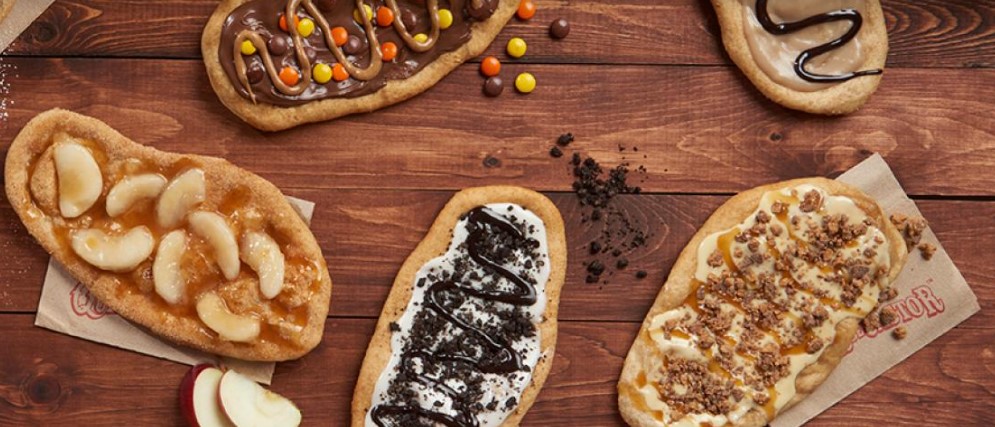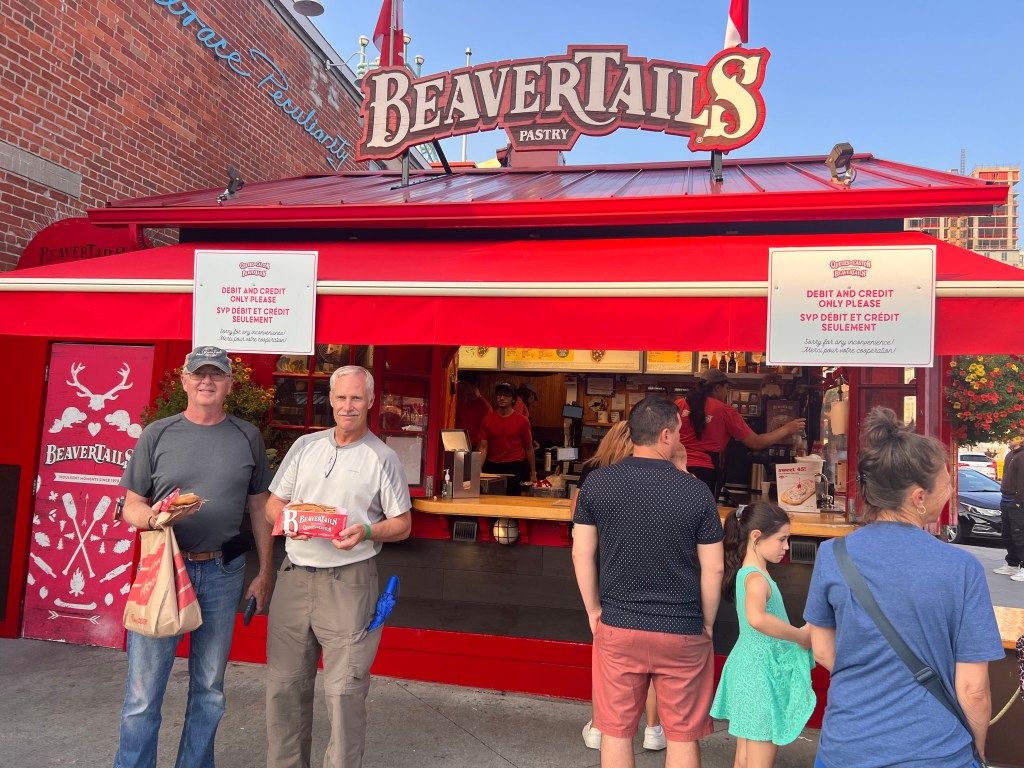“Do you have any drugs, alcohol, or firearms on your person or in your vehicle?” the Canadian border guard asked Jeff. “No, none,” Jeff answered. “Where will you be staying in Canada tonight?” the guard asked. ” In a hotel in Ottawa,” Jeff answered. “How long will you be in Canada?” “Nine days,” Jeff replied. “Are those three guys on motorcycles behind you with you?” the guard asked his final question. “Yes,” Jeff answered, “I claim them most of the time.”
We were at the Canadian border on our third day on the road. The four of us planned a 3,500-mile, two-week ride to Ottawa, Ontario, Canada’s capital, then around the Great Lakes, down the Great River Road along the Mississippi River as far as Moline, IL, then home after a two-night stop in Jasper, IN, for a German street festival.
Don, Scott, and I left our rendezvous spot in Christiansburg, VA, for a three-hour ride to Granny’s restaurant near Winchester. We met Jeff for a late breakfast after he rolled in from Virginia Beach. Don, Jeff, and I have been riding together for several years on our BMW R1200GS dual sport bikes. Scott was new to the group, riding a sleek, touring version of the BMW R1200.

After breakfast, we rode Route 522 through Pennsylvania’s beautiful Ridge and Valley region to Lewisburg. We rode to Tupper Lake, NY, through the Adirondack Mountains the following day. It was tourist season in the Adirondacks. We had to settle for Shaheen’s Motel, a sketchy place, but memorable in Tupper Lake was the Woodshed Restaurant with its eclectic menu, including Tomato and Watermelon Salad, White Gazpacho, and Pate Chinois.

After we crossed the spectacular Ogdensburg-Prescott International Bridge over the Saint Lawerance River, we immediately arrived at the Canadian border patrol station. Jeff rolled up first to the guard station. We had rehearsed answers to anticipated questions for a uniform story. But we didn’t anticipate: “How long will you be in Canada?” Jeff answered, “Nine days,” as we listened via our helmet intercoms behind him. Actually, we only planned four nights and five days; Jeff pulled that answer out of somewhere.
I rolled up to the guard window next. “Are you a boxer?” I had gotten that question several years ago when crossing the border to British Columbia. The guard had my license plate (BOXXER) before I turned off the engine. “No,” I said. ” It’s what I call my motorcycle.” The guard seemed satisfied with that answer. “How long will you be in Canada?” I hesitated for a second. “Nine days.”

From Tupper Lake, NY, we were in Ottawa and the Canadian Museum of History within three hours. A primary objective of our trip was a visit to Ottawa to explore and learn about the history of Canada and its government. Don visited Ottawa several years ago, but it was all new for the rest of us. It’s a beautiful city. We should have added another day to our stay, which would have made it closer to Jeff’s nine-day plan.


The Canadian Museum of History is a national museum on anthropology, Canadian history, cultural studies, and ethnology. It is just across the Ottawa River in Gatineau, Quebec, with spectacular views of Parliament Hill on the Ontario side. The purpose of the museum is to promote the heritage of Canada, as well as support related research. The museum includes over three million artifacts, documents, works of art, and other specimens covering Canada’s history. We marveled at the world’s largest indoor collection of totem poles and the most comprehensive exhibition of Canadian history ever created. It was a great place to begin our tour of Ottawa (and Canada) before entering our hotel.
Our hotel was on the edge of Byward Market, a buzzing hub of outdoor farmers’ market stalls and specialty food shops selling Canadian cheese, maple-infused chocolate, and “beaver tails.” More about the beaver tails later. Parliament Hill was within walking distance, so our motorcycles were safely ensconced in the hotel parking garage for our visit.
Early morning fog lifted slowly to reveal amazing architecture along our twenty-minute walk to Parliament Hill, including Notre Dame Cathedral Basilica, the National Gallery of Canada, Rideau Canal Locks, Fairmont Chateau Laurier Hotel, and the National War Memorial.

We had tickets for a 10:00 AM tour of the Canadian Senate. We were about an hour early as we approached the War Memorial. We were quickly captivated by the ceremony that had just begun at the memorial: commemoration of the 70th anniversary of the Korean War Armistice Agreement. The Korean War started on 25 June 1950 when North Korean troops invaded South Korea. United Nations forces soon joined the fighting which raged until an armistice was signed on 27 July 1953. Over 26,000 Canadians served on land, at sea, and in the air during this bitter conflict. Sadly, 516 Canadians died.

We jockeyed around the crowd for a good view of the old Korean War veterans taking their seats in their place of honor before the podium. Government dignitaries who would give short speeches for the occasion were already in place. As the ceremony began, we were asked by an official if we wished to sit with the veterans. Perhaps he was just filling the back-row seats, but I think he sensed our keen interest in the proceedings. Or maybe he was doing a favor to me, an old man, or thought I might have been a veteran as well. In any case, the four of us were honored to sit with the group and quietly participate in the ceremony.

The Band of the Ceremonial Guard played, speeches were made, wreaths were laid, and a statement from Prime Minister Justin Trudeau was read. It was a heartfelt occasion. I thought of Carol’s Uncle Louis, a Korean War Veteran who just celebrated his 92nd birthday and recently participated in an Honor Flight. Honor Flights are an opportunity to thank the Americans who secured our freedom by bringing them to the nation’s capital, cost-free, to see memorials commemorating their service. He loved the experience. Thanks for your service, Louis.

Parliament is the heart of Canadian democracy. Parliament includes the Governor General, the Senate, and the House of Commons. We took separate tours of the Senate, House of Commons, and the Hill. The government was not in session, but we learned much about the process from our very knowledgeable, young tour leaders. The Canadian government is a federation, a constitutional monarchy, and a parliamentary democracy all at once. The government acts in the name of the Crown but derives its authority from the Canadian people. By the end of our tours, we had a fairly good understanding of how it worked, but what Queen Elizabeth II and now King Charles III had to do with the process is still a bit of a mystery.


The quickest way to an overview of Ottawa is to take the Gray Line “Hop on, Hop off” bus for a city tour. Be sure to climb up on the open deck of the bus for unrestricted views. We did. It was great. The tour guide spoke non-stop in both English and French. We only hopped off when the tour was over, but for 24 hours, it would have been a great way to get around to all the major attractions. A lesser attraction pointed out was the oldest tavern in the city. We took note. It was that time of day. We were thirsty. The Chateau Lafayette tavern had a beer and food menu that did not disappoint, but no dessert.
According to the Hop On, Hop Off tour guide, a beaver tail was an iconic symbol of Ottawa that every tourist needed to experience. For that, we reached the middle of ByWard Market, looking for a beaver tail, presumably attached to an actual beaver. There was no beaver but many tails of all descriptions and tastes. A uniquely Canadian tradition, handmade Beavertail pastries are served with various toppings. Don had apple cinnamon, I had chocolate banana, Scott and Jeff? I don’t remember, but we all enjoyed our beaver tails and the aura of the Market, a diverse hub of colorful street art, hip stores, and surrounding eateries and rustic taverns.


The following morning we bid the hotel manager goodbye. We would miss him and him us. He was friendly and accommodating. He liked Don especially because he thought Don had an English Accent, a lot like Ringo Starr of the Beatles. We were only four days into our 14-day trip, with three more in Canada. Or was it six? I will ask Jeff.

Watch for Part II of our Canada Ride 2023.

Sounds both adventuresome and educational. Nine days, eh!!! jca
LikeLike
Very interesting Jim!
The chocolate/banana beaver tail sounds delicious!😋
LikeLike
Great job Jim, I think everyone had a great time, I know I did.
LikeLike